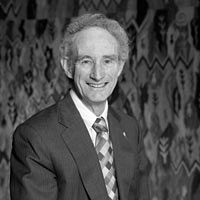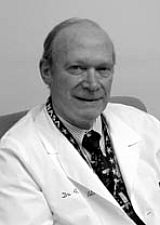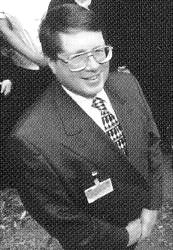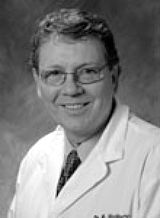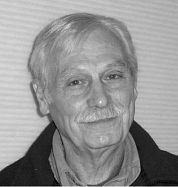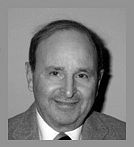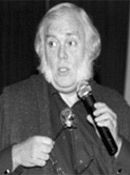Wind Turbine Syndrome (풍력발전소와 건강영향)
http://www.windturbinesyndrome.com/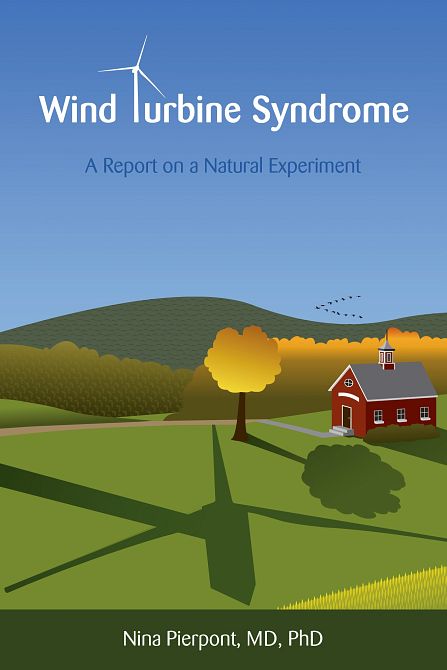
Published by K-Selected Books (Santa Fe, NM)
Quick facts:
» $18.00 USD
» 250+ pages
» The complete and authoritative report on Wind Turbine Syndrome to date
» Intended for clinicians and people living in the shadow of wind turbines
» Based on the evidence presented, it calls for a minimum of 2 km setbacks of industrial turbines from people’s homes

Drawing by R. Forrest Martin 2009, used with appreciation
July 30, 2009. The book is in press. We are going over page proofs now. We expect bound books in late August.
Once it’s published, a PayPal® purchase form will appear on this page, and you will be able to buy the book. The absence of a PayPal® form is your signal the book has not yet been published. (The book will be sold only on this site. Not bookstores and not on Amazon.)
While you’re waiting for the book, you are welcome to download and read a pre-publication draft of the book, found at Read book excerpts.
—Editor
Introduction
Wind Turbine Syndrome is the clinical name I have given to the constellation of symptoms experienced by many (though not all) people who find themselves living near industrial wind turbines: sleep problems (insomnia), headaches, dizziness, unsteadiness, nausea, exhaustion, anxiety, anger, irritability, depression, memory loss, eye problems, problems with concentration and learning, tinnitus (ringing in the ears). As industrial windplants proliferate close to people’s homes and anywhere else people regularly congregate (schools, nursing homes, places of business, etc.), Wind Turbine Syndrome likely will become an industrial plague.The following is a series of articles and reports I have written on wind energy and human health.
To read these articles, roll your cursor over the clickable text (it will highlight and underline as you do) and simply “click” (you may need to hold down the Control key as you click). Presto, there it is!
You must have Adobe Reader installed to read these. If you don’t have Adobe Reader, it’s a free download from Adobe at www.adobe.com (see “Get Adobe Reader” on Home page, top center, and follow the instructions).
The book is intended for physicians and other professionals and individuals who wish to better understand the wind turbine-associated symptom complex. This posed a dilemma: writing in the specialized language of clinical medicine and science is very different from the language one uses for lay readers. Yet my goal is to reach both audiences. I solved the problem by adding (at my editor’s insistence) a more conversational, parallel text which I christened WTS for Non-Clinicians.
The result is a book with two, tandem texts. They each say the same thing. One says it in the language of the clinician (WTS for Clinicians), the other in the everyday language of—well—my editor (WTS for Non-Clinicians).
The goal of WTS for Clinicians is scientific precision, including frequent expressions of my degree of certainty or uncertainty. Since the physics and the physiology I invoke are complex and not widely known among clinicians, I explain them in this text. Here, likewise, I quote and summarize numerous scientific articles, and I use numbers and statistics (albeit the simplest type known).
WTS for Non-Clinicians says it all over again, this time in English my mother-in-law would understand. To accomplish this I had to sacrifice a degree of scientific precision, since plain English and scientific precision don’t always mix. I freely acknowledge that WTS for Non-Clinicians might set some clinicians’ teeth on edge. For this I beg their indulgence.
—from the Preface
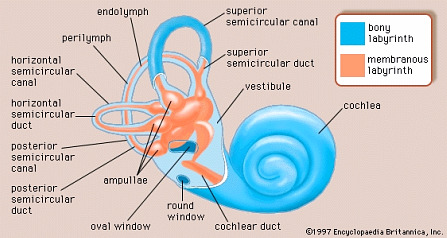
The Inner Ear (illustration ©Encyclopedia Britannica)
Editor’s note: A key to understanding Wind Turbine Syndrome is contained in the diagrams, above and below. Find the utricle and saccule in the drawing, below. Utricle & saccule, together, constitute the otolith organs. The otolith organs and the semicircular canals are the dedicated organs of balance, and motion and position sense.
Low frequency noise from wind turbines appears to send false signals to these highly sensitive structures (otolith organs & semicircular canals), causing dizziness, vertigo, and nausea, along with cognitive and memory deficits, and anxiety and panic attacks. Yes, the latter behavioral symptoms are indeed tied to the inner ear, as Dr. Pierpont’s book explains. WTS is a constellation of symptoms, including sleeplessness, and involves several sensory systems (besides the inner ear) being dis-regulated. Even so, the inner ear structures are vital to understanding the pathophysiology of Wind Turbine Syndrome.
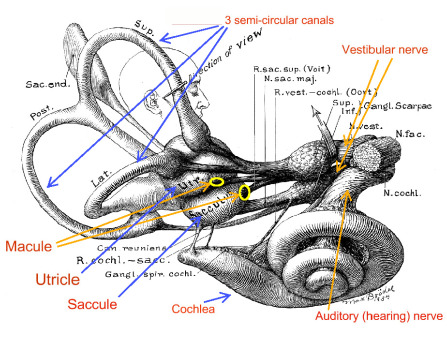 ·
·
Inner Ear (illustration ©Max Brodel 1934)
You will notice that the excerpts, below, are all in manuscript (typescript) format. In each case they represent the latest draft of the ms. Understand that the final, published version will differ somewhat from the text you read below, since the ms. is still, as of this writing, a work in progress. Nevertheless it is close to final draft. The Editor (March 4, 2006)
»Preface (complete)
»Section 1 Wind Turbine Syndrome for Clinicians (partial)
Abstract
Introduction & Background
Methods
Results
Discussion
»Section 2 Wind Turbine Syndrome for Non-Clinicians (complete)
Abstract
Introduction & Background
Methods
Results
Discussion
»Tables (partial)
»References (complete)
»Glossary (complete)
»Abbreviations (complete)
If you prefer reading through the pre-publication ms. as a single document, or would like to post the entire ms. on the Web as a single document, or wish to print it off as a single document (yes, you are welcome to post it on the Web and print off, as you wish): Click here for the entire, pre-publication ms., “Wind Turbine Syndrome: A Report on a Natural Experiment” (March 7, 2009 draft).
Peer Review: What is it?
The following explanation is taken from the Preface to Dr. Pierpont’s report. (You will find this, as well, by clicking on “Preface” in the Read Excerpts from the Book link on this site.)
A few words about peer review. Peer review is quite simple, contrary to the mystique it has acquired among wind developers (most of whom have a fanciful idea of what it is). Peer review consists of sending a scholarly manuscript to experts in that particular field of knowledge, who are asked to judge whether it merits publication. Simple as that. The identity of reviewers (also called “referees”) can be either known to the author (this is often the case with book manuscripts, where authors are routinely asked by the editor to submit a list of possible referees) or kept confidential.
If the referees (usually consisting of two or three) manage to convince the editor that the manuscript is not worthy of publication, the editor contacts the author and rejects the manuscript. If, on the other hand, the referees feel the manuscript merits publication subject to certain revisions and perhaps additions, the editor will forward their reports to the author and ask for a response. “Are you willing to make these changes? Do you agree with these criticisms? If not, give me compelling reasons why not.”
The author then revises the manuscript accordingly, except where she feels her referees are wrong—and manages so to convince the editor. Once the editor feels the author has addressed criticisms and suggestions adequately, he (she) proceeds with publication.
Lastly, referees do not have to agree with the author’s arguments or conclusions. This is worth emphasizing. Their purpose is merely to certify that a) the manuscript conforms to conventional standards of scholarly or clinical research appropriate for the discipline, and, perhaps most important, b) the manuscript is a significant contribution to knowledge.
In the case of this book, a variety of scientists and physicians, all professors at medical schools or university departments of biology, read and commented on the manuscript and recommended it as an important contribution to knowledge and as conforming to the canons of clinical and scientific research. Moreover, they did in fact suggest revisions, even substantial revisions and additions—all of which I made. Some gave me written reports to include in the book itself. Others offered to review the book after it was published.
With that said, the litmus test of scientific validity is not peer review (which, after all, is not infallible, as the history of science amply demonstrates). Peer review is an important first step in judging scientific or scholarly merit, however the ultimate test is whether other scientists can follow the author’s research protocol and get the same results.
That, of course, remains to be seen with this report.
I thank Dr. Joel Lehrer in particular for providing me with new information regarding vestibular function, contributions echoed by Drs. Owen Black and Abraham Shulman (all in otolaryngology/neurotology). I thank Professors Henry Horn (ecology) and Ralph Katz (epidemiology) for discussion of scientific method and presentation. Dr. Jerome Haller (neurology) and Professor Robert May (theoretical ecology and epidemiology, past president of the Royal Society of London) read the manuscript and provided commentary to be included in the book, as did Dr. Lehrer and Professors Horn and Katz, for which I am most grateful. Barbara Frey (biomedical librarian) edited the manuscript. Other readers read and discussed the manuscript with me and advised on routes of publication. These included Professor Carey Balaban (neuroscience), Dr. Rolf Jacob (psychiatry/neurotology interface), Dr. John Modlin (pediatrics/infectious diseases), and Dr. Anne Gadomski (pediatrics/public health). I thank them all, as well as Christina Ransom and William McCall, librarians of the Champlain Valley Physician’s Hospital in Plattsburgh, NY, and the FYI Hospital Library Circuit Rider Program.
George Kamperman and Rick James, INCE (Institute of Noise Control Engineering) certified noise control engineers, edited the sections describing noise measurement and modeling. They also analyzed noise studies done at the homes of several affected families, while developing standards and protocols for the assessment and control of noise from industrial wind turbines. Kamperman and James presented their standards and rationale at the Noise-Con 2008 meeting of the Institute of Noise Control Engineering (USA) in July 2008, then expanded their paper with a detailed discussion of noise measurement protocols and a model wind turbine ordinance. The expanded paper is posted on the Wind Turbine Syndrome website as How Loud Is Too Loud?
What scientists and clinicians are saying about the report:
“Impressive. Interesting. And important.”
–-Professor Lord (Robert) May, PhD, of Oxford University OM AC Kt FRS. Click here and here for further information on Lord May’s prodigious research accomplishments and honors, including President of the Royal Society (2000-2005) and Chief Scientific Advisor (1995-2000) to the UK government. Lord May is currently at the forefront of global warming research and is considered a pioneer in epidemiological research. Note that Lord May was knighted and then made a baron by Her Royal Highness Queen Elizabeth II in recognition of his contributions to science.
“Dr. Pierpont has clinically defined a new group of human subjects who respond to low frequency, relatively high amplitude forces acting upon the sensory and other body systems. Her rigorous clinical observations are consistent with reports of the deleterious effects of infrasound on humans, including, but not limited to, the low frequency sonar effects on divers. There are clinical conditions (such as dehiscent superior semicircular canals) that might explain some of Dr. Pierpont’s clinical symptom review, but this relatively rare condition cannot explain all of her observations.
“Dr. Pierpont’s astute collection of observations should motivate a well-controlled, multi-site, multi-institutional prospective study.”
—F. Owen Black, MD, FACS, Senior Scientist and Director of Neuro-Otology Research, Legacy Health System, Portland, Oregon. Dr. Black is widely considered to be one of the foremost balance, spatial orientation, and equilibrium clinical researchers in America. (Editor’s note: Otolaryngology + Neurology = Neuro-Otology. Otolaryngology = Ears, Nose, Throat specialist.)
“Like so many earlier medical pioneers exposing the weaknesses of current orthodoxy, Dr. Nina Pierpont has been subject to much denigration and criticism. It is a tribute to her strength of character and conviction that this important book has reached publication. Her detailed recording of the harm caused by wind turbine noise will lay firm foundations for future research. It should be required reading for all planners considering ‘wind farms.’”
—Christopher Hanning MD, FRCA, MRCS, LRCP. Dr Hanning, a founder of the British Sleep Society, is a leading sleep clinician and researcher. He recently retired as Director of the Sleep Clinic and Laboratory at Leicester General Hospital, one of the largest sleep disorder clinics in the UK.
“This is an extraordinary book. It is personal and passionate, which makes it compelling reading. But it is much more—authoritative, meticulous, and scholarly. The descriptions of anatomy, physiology, and the pathophysiology of how noise affects health are bang on. It clearly takes its place as the leading work on the topic.
“In addition to Dr. Pierpont’s detailed clinical accounts, there is accumulating evidence of adverse health effects from Japan, New Zealand, the UK, USA, and Canada. There are also some 357 organizations from 19 European countries demanding an enquiry by the European Union about health and many other adverse effects of wind farms. At a minimum, the EU would be wise to consult with Dr. Pierpont.
“This book is a must-read for all health care professionals, especially those in clinical practice. One cannot but hope that politicians and policy makers at all levels heed the wake-up call that there are serious consequences to precipitant decisions relating to so-called green energy.”
—Robert Y. McMurtry, MD, FRCS (C), FACS. Former Dean of Medicine and Dentistry at the Schulich School of Medicine & Dentistry, University of Western Ontario. Dr. McMurtry has had a long and distinguished career in Canadian public health policy at both the federal and provincial level, including as founding Assistant Deputy Minister of the Population and Public Health Branch of Health Canada, and currently as a member of the Health Council of Canada.
Excerpts from peer reviewers (referees):
This “report … deserves publication…. The careful documentation of serious physical, neurological and emotional problems provoked by living close to wind turbines must be brought to the attention of physicians who, like me, are unaware of them until now.”
—from the referee report by Jerome Haller, MD, Professor of Neurology and Pediatrics (retired 2008), Albany Medical College, Albany, New York. Dr. Haller is a member of the American Academy of Pediatrics, the American Academy of Neurology (Child Neurology Section), and the Child Neurology Society.
“This [report] addresses an under-reported facet of Noise Induced Illnesses in a fashion that is detailed in its historical documentation, multi-systemic in its approach and descriptions, and painstakingly and informatively referenced…. [It] opens up the area of low frequency vibration to the medical community….I applaud her.”
—from the referee report by Joel F. Lehrer, MD, Fellow of the American College of Surgeons,
Clinical Professor of Otolaryngology, University of Medicine & Dentistry of New Jersey.
“Let me congratulate you on your case-series investigation on Wind Turbine Syndrome…. As an epidemiologist I fully appreciate your truly remarkable effort, one that smacks of being well done and with a full respect for honest inquiry….
“Your high level of scientific integrity is revealed both in your [research] design decisions and in your writing, both of which are of the highest order….
“You have laid a remarkable, high quality, and honest foundation for others to build upon with the next stages of scientific investigation. In doing so, you have made a commendable, thorough, careful, honest, and significant contribution to the study of (what we can now call) Wind Turbine Syndrome.”
—from the referee report by Ralph V. Katz, DMD, MPH, PhD, Fellow of the American College of Epidemiology,
Professor and Chair, Department of Epidemiology & Health Promotion
New York University College of Dentistry
“Dr. Pierpont has gathered a strong series of case studies of deleterious effects on the health and well-being of many people living near large wind turbines. Furthermore, she has reviewed medical studies that support a plausible physiological mechanism directly linking low frequency noise and vibration (like that produced by wind turbines and which may not in itself be reported as irritating) to potentially debilitating effects on the inner ear and other sensory systems associated with balance and sense of position. Thus the effects are likely to have a physiological component, rather than being exclusively psychological….
“It is … clear that many people are affected at far greater distances than the minimum set-backs currently allowed between turbines and residences. Accordingly, it would be prudent to establish much longer set-backs from houses as a criterion for siting new turbines, pending further studies on this newly documented Wind Turbine Syndrome. Documentation of the syndrome itself is strong evidence that current set-backs are woefully inadequate.”
—from the referee report by Henry S. Horn, PhD, Professor of Ecology and Evolutionary Biology, and Associate of the Princeton Environmental Institute, Princeton University
»All four peer review (referee) reports will be included in their entirety in the book—Editor.
